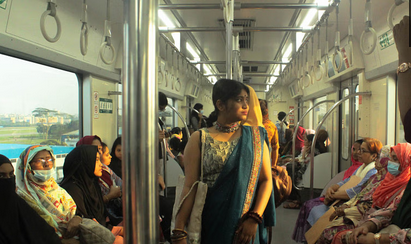
If Dhaka is taken as a sample to examine how the sphere of the state and public life is treating women, the best optics is to look at public transportation. Mobility after all defines how far one can go.
When metro rail was inaugurated with a designated female compartment, women flocked to stations.
Trina, a 25-year-old university student, said, “From the first moment I boarded the compartment, I knew I would never go back to the bus or any other public transportation for that matter.”
In Dhaka’s local buses, there is a designated area exclusively for female passengers. In 2008, the government mandated bus owners to allocate nine seats reserved for women, children, and individuals with special needs. In almost all the buses, a sign in Bangla reads “Mohila o protibondhi ashon 9 ta (Nine seats for women and disabled)”.
The reality is, while these seats are intended for women, if a man occupies one of those seats, it is rare for a male commuter to comply with a woman’s request to vacate it.
On the face of it, a city transport system that can offer its residents safe, affordable and quick access to their destinations doesn’t immediately come with a gendered narrative. But space is very gendered, and spheres of state and public life are the manifestation of how a particular culture sees a certain section of people.